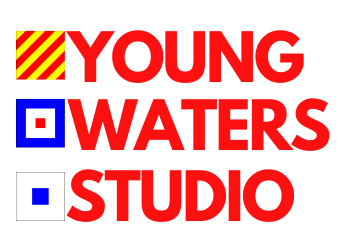

Angie Young
3 Musts When Blogging
To write a successful blog, there are several areas that need to come together to create an article that speaks to your audience. Let’s assume you already have your awesome blog idea, found your niche and worked out what your audience needs. Next, it’s vital to have a unique approach and to create awesome content.
Polishing and refining the approach and content on your blog is the best way to make it resonate with your audience. The right article, focused in the best way, written in an interesting style is almost impossible to ignore. This article explores ways to create your own unique approach, the importance of good content and how to monetize your blog. We’ll explore the following topics:
- Having a unique approach or selling point — This will set you apart from the competition and help you stand out in the minds of your readers
- Creating great content — The golden rule: content is king, so write articles that can’t be ignored and will be read and shared by others
- Realizing that monetizing a blog is hard — There are ways, but it can be a struggle; you’ll need to tweak and test to find out what works for you
Your unique approach or selling point
Be true to yourself if you want your blog to resonate with people. Say things in a way that catches your reader’s attention. That might be:
- Your tone of voice or writing style is your personality, so let it show. You already have a great interest in the topic, your readers will appreciate your style and knowledge.
- Remember, you are the subject matter expert. You have information to share with others, so give your audience what they are looking for, true insight into your subject
- Your approach and ideas — Think deeply about your subject and provide your creative insight
- Be the voice of authority —write with considerable weight and authority, sharing your expertise with others
- Before you write, it’s important to determine what sets you apart. Understanding your niche and your audience are the first steps in doing this, but you will need to build on this and refine your approach.
Create Great Content
To get noticed, you need to have great content, and will ultimately determine the long-term success of your blog. Great content means that:
- You’ll get listed in search engines (Google loves content-rich sites).
- Other blogs and sites will link to your content, bringing you more readers and better search results.
- Your readers will come back again and again because your content satisfies their needs.
- The blog posts will be more interesting for you to write because you’ll have to work to make them awesome!
- Your site will become an authority in its field and will gain recognition and a following.
There’s no shortcut to writing great content, it takes time and effort, testing and tweaking. Content really is the most important. The internet is inundated with mediocre content. Pumping out a blog is not a get rich quick plan for success. Spend time crafting your posts, and you will see the benefits. Take the time and make your content valuable for your reader and you will keep your readers happy.
Realize that monetizing a blog is hard!
You can set up and start writing a blog in ten minutes or less, and the internet is home to over 500 million blogs. That said, turning a blog into a successful income stream is going to take time. Set realistic expectations on how much money you are going to make and ensure you’re in this for the long haul!
The main ways that a blog can make money are:
- Contextual Advertising
- Affiliate Marketing
- Selling your own products
- Getting paid to write
All of these methods require either substantial traffic, products you can sell, or building a reputation in your field, but if you’re dedicated to your blog, that’s certainly achievable.
Join Our Newsletter
Receive our quarterly newsletter.

